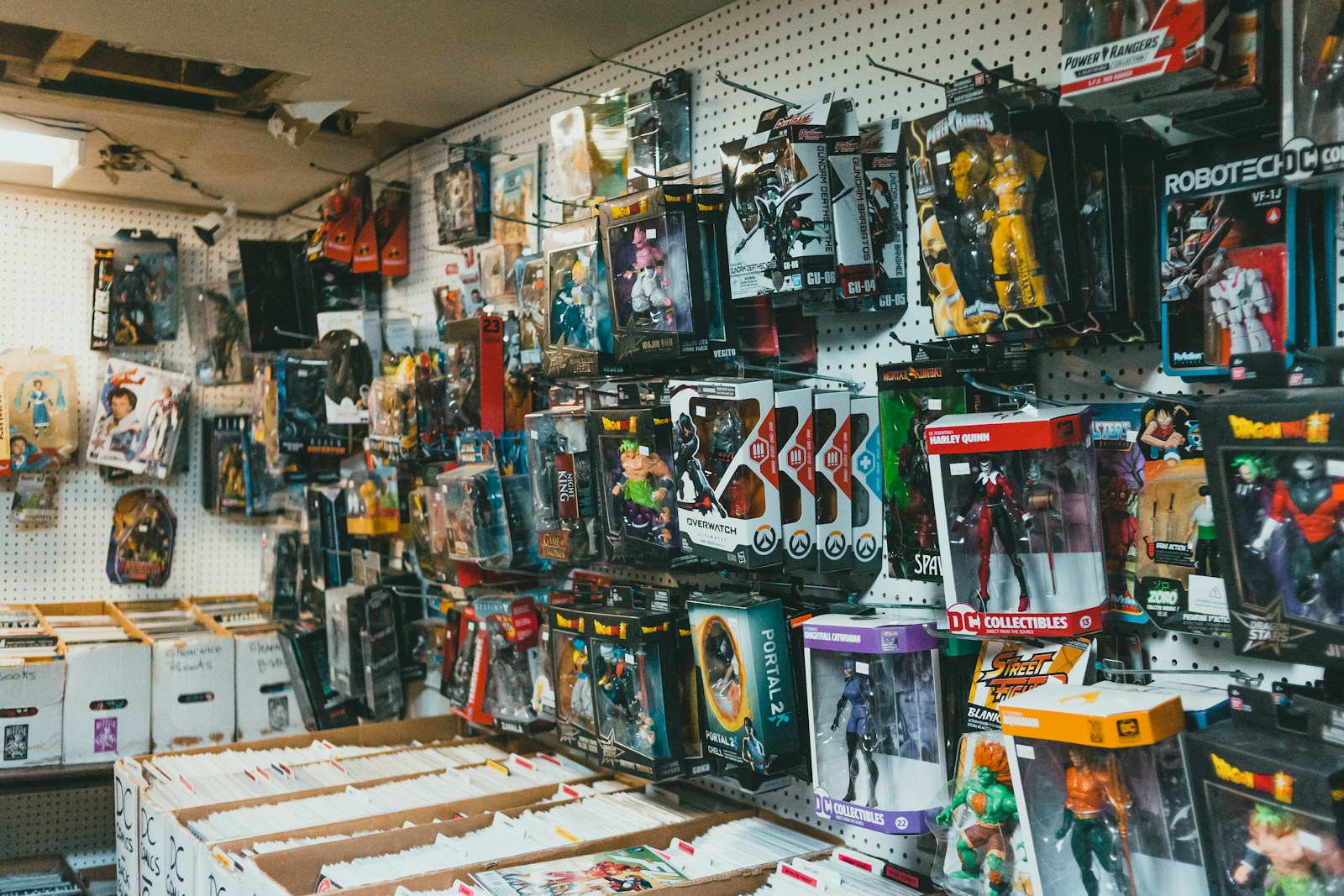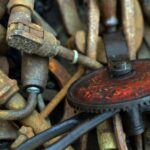We all care about where our tools come from. It shapes how we feel about quality. It shapes how we think about value. It even shapes how we support jobs. In other words, origin matters.
Milwaukee Tool is a big name. The brand is bold. The red stands out. The performance is real. But where are Milwaukee tools actually made?
Let’s walk through it in clear steps. We’ll keep it simple. We’ll keep it straight. And we’ll give you a useful way to shop with confidence.
The Short Answer First
Milwaukee tools come from more than one place. Some are made in the United States. Many are made outside the United States. Parts often come from several countries. Final assembly may happen in another. In short, it is a global supply chain. But most of all, the brand sets the spec, the design, and the quality bar. Then it builds to that bar in different facilities.
That is the short answer. Now let’s go deeper.
Who Owns Milwaukee Tool?
Milwaukee Tool started in 1924. The brand has lived through many eras. Today, Milwaukee Tool is part of Techtronic Industries. We often say TTI. TTI is a global company. It manages many tool brands. This mix helps Milwaukee scale faster. It helps Milwaukee invest in new plants. It helps Milwaukee build new lines and new jobs in more than one country.
This matters because ownership drives strategy. It explains why there are many plants. It explains why new facilities keep opening. It explains the steady push into new categories.
“Made in USA” vs. “Assembled in USA” vs. “Global Materials”
Labels can feel confusing. So let’s slow down and define them in plain words.
- Made in USA usually means the significant manufacturing is done in the United States. It also implies that most parts are U.S.-made.
- Assembled in USA means workers in the U.S. put major parts together here. But several parts may be imported.
- Made in USA with global materials means production happens here, but many inputs come from other countries.
This mix is common in today’s world. Batteries need cells. Motors need magnets. Electronics need chips. Many of these parts come from specialized suppliers. Instead of fighting that, tool makers build strict standards. They set tight controls. They test hard. That is how they protect performance across borders.
U.S. Facilities You Should Know
Milwaukee has grown its U.S. footprint over the last decade. Several facilities build, assemble, or package tools and accessories. Instead of listing every address, let’s focus on what matters to you as a buyer.
Mississippi: A Key Hub
Mississippi hosts several Milwaukee operations. These plants handle tool assembly, accessory manufacturing, and expansion projects. This is where many “Assembled in USA” labels come from. Think cordless tools. Think certain accessories. Think scaling capacity during busy seasons. The state is also home to major distribution sites that feed stores and jobs across the country.
Wisconsin: The Brand’s Home State
Milwaukee began in Wisconsin. The brand’s headquarters are in the Milwaukee area today. Wisconsin is also home to engineering, design, and testing teams. And in recent years, Wisconsin added modern manufacturing for select hand tools. You will see pliers, drivers, and other core items built in Wisconsin with advanced processes. This return to hand-tool manufacturing in the state is a big point of pride.
Other U.S. Operations
Beyond these hubs, Milwaukee has support and R&D across several states. The company invests in testing labs, prototyping, and training spaces. The theme is clear. Critical thinking work stays close to the user. That allows fast feedback. It feeds innovation. It tightens quality loops.
What this means for you: Many premium accessories and some hand tools are truly U.S.-made. Many cordless tools are U.S.-assembled with global parts. And a lot of distribution muscle lives in the U.S., which helps with speed and service.
Where Are Milwaukee Tools Made Outside the U.S.?
We live in a global tool world. Milwaukee is no exception. The company uses factories in Asia and other regions for large parts of its line. This includes major cordless tools, many chargers, and many hand tools and accessories.
Why do that? Two reasons stand out.
- Scale and specialization. Some countries host huge ecosystems for motors, electronics, and battery cells. They supply the world.
- Speed and capacity. Global plants help Milwaukee meet demand during peak seasons. They also let the brand launch lines faster.
Common regions include:
- Asia. Many cordless tools, chargers, and bits come from highly specialized Asian plants.
- Mexico and other neighbors. Near-shoring can improve lead times. It can also reduce logistics risk.
- Europe. Select accessories and pro-grade items can come from skilled European factories.
The exact location depends on the product family, the materials, and the line’s volume. It also shifts over time as the company upgrades capacity and opens new sites.
What Products Are More Likely U.S.-Made?
You can look for patterns. They help.
- Premium accessories. Many SAWZALL® blades and select hole saws are frequently U.S.-made. Packages often show the origin.
- Select hand tools. Milwaukee has invested in U.S. hand-tool production. Pliers, drivers, and cutters from newer lines are often built in Wisconsin.
- Special runs and kits. Limited series or pro-focused items may be assembled in the U.S., even when parts are sourced globally.
Still, always check the label. Besides, the mix can change as new facilities come online.
What Products Are More Likely Imported?
- Cordless drills, impact drivers, saws, and grinders. Many of these are built in advanced Asian plants.
- Chargers and many battery packs. Cells are almost always imported. Pack assembly may vary by line.
- Storage systems and soft goods. Tool boxes, organizers, and bags are often imported. Some lines shift over time, so read the stamp.
Again, the label is your friend. Do not guess. Look at the tool body. Look at the carton. Look for the words “Made in,” “Assembled in,” or “Global materials.”
How to Check Origin for a Specific Tool (Fast)
You want a quick, simple process. Here it is.
- Check the tool itself. Look for a molded or printed origin near the serial plate or base.
- Check the packaging. Most boxes print country of origin near the barcode or the compliance area.
- Check the product page. Many retailers list origin in the “Specs” tab. It may say “varies by model.”
- Watch for family differences. Two drill kits can be in the same series but made in different places. The difference may be the battery, the charger, or the case supplier.
- Compare batch to batch. Origin can change between production runs. If it matters to you, verify before you buy.
Why the Mix? Cost, Capability, and Choice
It is easy to say “just build everything here.” But modern tools are complex. They need rare-earth magnets. They need tight-tolerance gears. They need robust electronics. They need high-output cells. To secure these at scale, companies use global networks. Instead of choosing one country, they choose the best process for each part.
The upside for you is choice. You can select U.S.-made accessories when you want them. You can pick a U.S.-assembled combo kit when it fits your values. You can buy an imported tool when it gives you the best price for the performance you need. You are in control.
Does Origin Change Quality?
This is the big question. Here is the clear answer. Origin does not decide quality by itself. Standards do. Design does. Testing does. Warranty and service do. Milwaukee sets the spec. Then Milwaukee holds its factories to that spec. The company tracks defects. It audits lines. It makes changes when needed. That is how quality is protected across borders.
So, buy with your eyes open. But do not assume that one country always means better. Instead, read reviews. Handle the tool. Check warranty terms. Look at service support near you. In other words, judge the full picture.
Batteries, Cells, and the Realities of Energy Density
Cordless tools live or die by their batteries. Here’s the truth. The cells inside most tool batteries come from a small number of global makers. The chemistry is advanced. The lines are huge. The tolerances are tight. Because of that, the cells are almost always imported. The pack can be assembled in different regions. The BMS can be tuned by the brand. The housing can be molded anywhere. But the cell source is still global.
If you prefer U.S.-built packs, read the label closely. You may see “assembled in” language. You may see “with global materials.” That is the reality of today’s energy supply chain.
How Milwaukee Balances Price and Performance
Let’s be honest. We care about how much a tool costs. We care about how long it lasts. We care about service when something fails. Milwaukee uses its global network to hit a sweet spot. It pushes high-end motors and smart electronics. It invests in blades and bits that hold an edge. It pairs this with warranty policies that protect pros and serious DIYers.
This balance is the reason we see both U.S.-made and imported items in the same aisle. It is a portfolio approach. It also gives Milwaukee the flexibility to launch new lines without starving core products.
The Story Behind “Nothing but HEAVY DUTY™”
A slogan is only words unless it shows up in the work. Milwaukee’s bet is that pro users will pay for performance and trust. The brand ties origin to this in two ways. First, it adds U.S.-made and U.S.-assembled items in key categories like accessories and hand tools. Second, it uses global plants to deliver value and volume in cordless. This two-track approach is meant to keep both performance and price in range. You see it on the shelf. You see it in the catalog. You feel it on the job.
What This Means for Trade Pros
If you are a contractor, you want uptime. You want fast swaps if something breaks. You want blades that do not quit. You want bits that do not snap. For you, origin is one factor. But it sits next to warranty, service, and stock levels. If your local distributor supports Milwaukee well, you win time. And time is money.
Ask your rep which lines are U.S.-made if that matters to you. Ask which tool families are most serviceable locally. Build your kit around those answers. In other words, buy for your workflow, not just for a flag on the box.
What This Means for DIYers and Weekend Builders
If you are a homeowner or a weekend builder, you want simple wins. You want a kit that works every time. You want blades that do not chatter or burn up. You want a driver that sinks the fastener without stripping it. You can still match origin to your values. You can pick U.S.-made blades or U.S.-built pliers. You can grab an imported combo kit to stretch your budget. You can do both and feel good about your choices.
Quick Buyer’s Map by Category
Use this cheat sheet when you’re in the aisle or shopping online.
- Power Tools (M12™ / M18™): Often imported, with some U.S. assembly on select models and kits. Always check the specific kit number.
- Batteries & Chargers: Cells are global. Packs and chargers are often imported, with assembly locations varying by line.
- SAWZALL® Blades & Hole Saws: Many are U.S.-made. Look for clear origin on the card.
- Drill Bits & Driver Bits: Frequently imported, with premium lines made where the best process exists.
- Hand Tools (Pliers, Drivers, Cutters): Mix of U.S.-made and imported. Newer premium lines often showcase U.S. production.
- Storage & Soft Goods (PACKOUT™, bags, pouches): Usually imported. Specific runs can vary. The label tells the truth.
How Origin Impacts Price
Origin affects cost, but not in a simple way. Labor is one part. Materials are another. Shipping and tariffs add more. Warranty and service networks add more still. A U.S.-made blade may cost a bit more. But it may last longer. It may cut straighter. It may be worth the price in one afternoon on the job.
An imported drill may run cheaper than a U.S.-assembled version. But if the motor and electronics match the spec, you may see the same result in your work. This is why the best move is to map a tool to its job, not just to its origin.
Responsible Buying Without the Headache
You can buy with values and still stay sane. Try this simple plan.
- Pick one category to anchor in the U.S. Many pros choose blades or hand tools.
- Pick one category for value. Many choose a cordless kit that hits power, runtime, and price.
- Stick to one battery platform. This saves money and reduces waste.
- Service matters. Choose brands with strong local support. Milwaukee scores well here in most regions.
- Check the label, not the rumor. A friend’s drill might be from a past batch. Your batch could be different.
Common Questions, Simple Answers
Are Milwaukee tools made in China?
Yes, many are. The brand uses advanced plants there for cordless tools and electronics.
Are any Milwaukee tools made in the USA?
Yes. Many accessories and select hand tools are U.S.-made. Some power tools and kits are U.S.-assembled with global materials.
Is U.S.-made always better?
Not always. Quality comes from design, materials, process control, and testing. Origin is one input. It is not the only one.
Do batteries come from the U.S.?
Battery cells are almost always imported. Pack assembly can vary. Read the label to know.
Why does origin change from batch to batch?
Capacity, parts supply, and new facilities can shift production. Labels reflect the current run.
A Note on Labels and Laws
Origin labels must follow rules. Packaging uses set phrases for a reason. “Made in,” “Assembled in,” and “with global materials” are not marketing fluff. They are legal statements. So when in doubt, trust the box and the tool body. That is the source of truth for that item in your hand.
The Bottom Line We Can Stand Behind
Milwaukee builds in more than one place. Some tools are U.S.-made. Some are U.S.-assembled. Many are imported. The company uses a global network to hit performance, price, and speed. It invests in U.S. plants for key categories. It supports the work with testing, design, and service close to the user.
So buy with clear eyes. Choose the origin that fits your values. Choose the tool that fits your job. And choose the platform that fits your future. That is how you win with Milwaukee, day after day.
Choosing With Confidence: Your Next Step
If you want to support U.S. manufacturing, start with blades and hand tools. If you want maximum value on a cordless kit, compare specs and warranties, then decide. If you need both, mix and match. After more than a century in this space, Milwaukee gives you the room to do exactly that.
We all want tools that feel right in the hand. We want tools that start every time. We want tools that do the job and go back in the case without drama. Country of origin matters. But performance on the job matters more. When you can have both, that is a clear win.
Bright Choices Ahead
You now know how Milwaukee builds across the map. You know what to expect from labels. You know how to read a box in ten seconds. Instead of guessing, you can decide with purpose. And that helps all of us do better work—on the job, in the shop, and in our own back yards.



